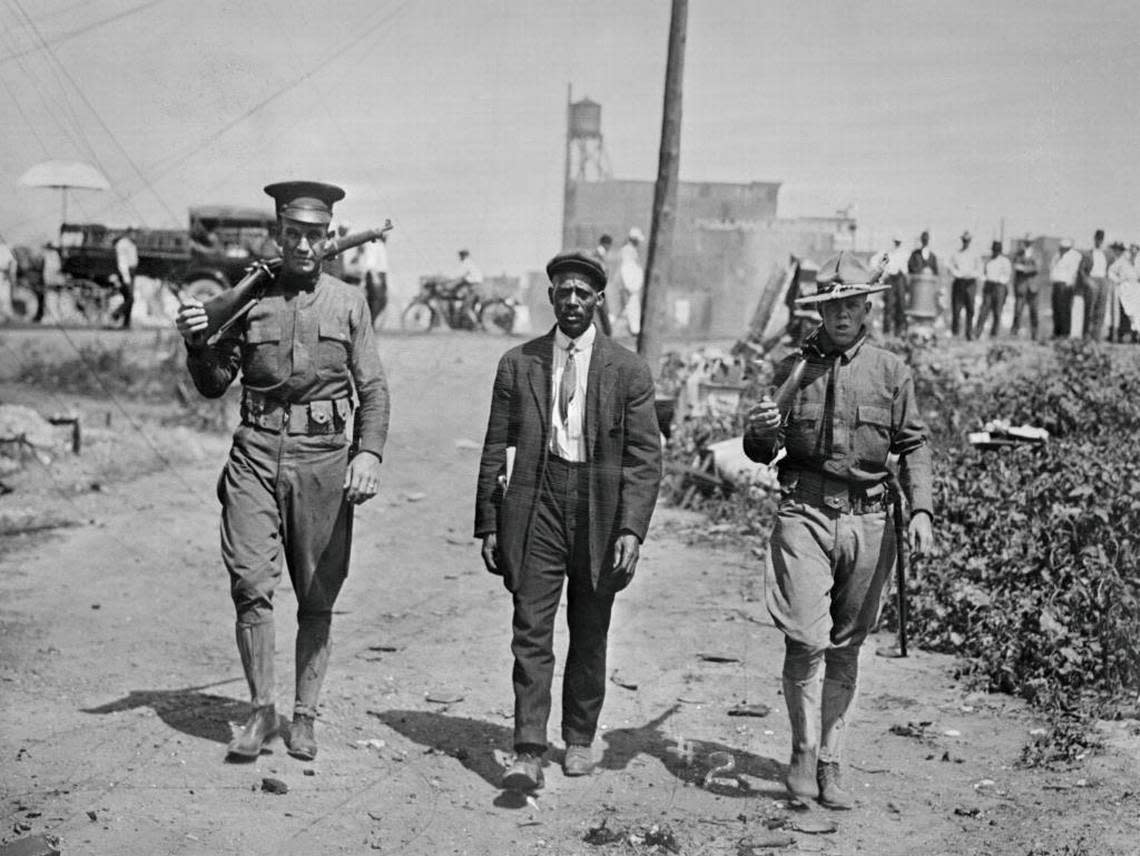What happened during the 1917 attacks on Black people in East St. Louis? Here’s a summary

The attacks on Black East St. Louisans in May and July 1917 are commonly known as race riots, but the violence could easily be described as a massacre.
It’s the term W.E.B. DuBois, Ida B. Wells and local newspapers used to describe the violence at the time, as opposed to the word “riot” used later by Congress when investigating the events.
Angry whites executed targeted attacks against largely defenseless Black East St. Louisans, who suffered immeasurable damage to life and property.
After an initial outbreak of violence on May 28, a white mob on July 2 perpetrated some of the most heinous violence in American history against Black residents of the city, which was mostly white at the time but where Black people had been living for decades.
Hundreds of books, articles, public hearings and first-hand accounts recorded the devastation of those attacks, but here is a summary of the events that led up to the racist attacks and their effects on Black East St. Louisans at the time.
What happened during the East St. Louis massacres?
On May 28, white labor union members attended an East St. Louis city council meeting where they complained about companies using Black workers as strikebreakers. Rumors about crimes by Black residents spread among the workers, and after the meeting, whites began attacking Black people in the streets. The mob dissipated by morning.
Fury continued to build between late May and July 1917 as rumors about Black migration and crime spread.
On the night of July 1, a group of white men drove around a Black neighborhood shooting into houses. A church bell rang alerting Black residents, and a group assembled to defend against the white assailants. After hearing the reports, police officers drove through the neighborhood in the same type of car as the assailants — a Ford Model T — and Black residents shot at the vehicle, killing two police officers.
A violent mob began gathering downtown around 10 a.m. on July 2. The mob, made up of white men and women, began attacking Black men, women and children alike. They pulled them from streetcars and beat them, shot them, threw stones at them, murdered and maimed them, hanged them from lampposts, and dumped their bodies in a nearby creek. The mob looted Black residents’ homes and then set them on fire.
Black residents were able to defend themselves to an extent, but without protection or help from local police or National Guard soldiers, most went into hiding and escaped across the Mississippi River to St. Louis when they had the opportunity.
The violence slowly subsided, and by Independence Day, news of the massacre had spread nationwide.
Thirty-nine Blacks and 8 whites were killed during the July massacre, according to the official count, though the NAACP estimated between 100 and 200 Blacks died. Whites caused hundreds of thousands of dollars in property damage.
What caused the massacres?
A few key elements led up to the massacres in East St. Louis: Politicians spread conspiracies about Black residents’ role in voter fraud. Newspapers fanned the flames of rumors about Black migrants causing crime. Local government and union leaders exaggerated the number of Black Southerners migrating to East St. Louis and their effects on the local economy.
All of the elements were tied to racism against Black residents, who had the right to live and work in East St. Louis but who white residents resented, instead of accepting.
Want to learn more? Here’s some further reading.
American Pogrom: The East St. Louis Race Riot and Black Politics by Charles Lumpkins
The Broken Heart of America by Walter Johnson
The Crisis, September 1917, HathiTrust Digital Library
The East St. Louis Massacre: The Greatest Outrage of the Century by Ida B. Wells-Barnett
Made in USA: East St. Louis by Andrew J. Theising
Never Been a Time: The 1917 Race Riot That Sparked the Civil Rights Movement by Harper Barnes
Race Riot at East St. Louis, July 2, 1917 by Elliott Rudwick
1917 Race Riot articles compiled by Southern Illinois University Edwardsville (https://bit.ly/3hsvWdZ)

